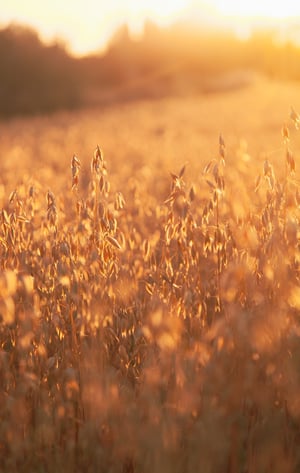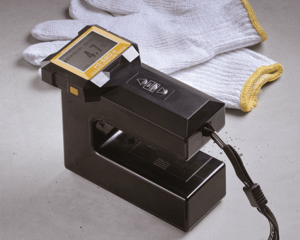 Oats are a dietary staple in many areas of the world. We consume them in foods like oatmeal and oat flour, and even in baked goods such as cookies, granola bars, and bread.
Oats are a dietary staple in many areas of the world. We consume them in foods like oatmeal and oat flour, and even in baked goods such as cookies, granola bars, and bread.
Farmers who choose to grow oats do so for a few reasons. Oat crops can help farmers disrupt weed cycles and soak up nitrates in the soil leftover from nitrate applications. Additionally, because they are harvested early in the season, oat crops are a great way for farmers to spread their labor over an entire growing season, rather than dealing with every crop at the same time.
Also, buyers pay a premium for food-grade oats. The only catch? Farmers have to meet specific test weight and protein levels. It can be a challenge to meet test weight standards of 38 pounds per bushel, and hot weather conditions can negatively impact test weights.
When producing food-grade oats, moisture levels matter at every stage of production.
Harvesting Oats
Oat crops are typically harvested any time past the middle of the summer, depending on when the oats were planted. When the oats reach full ripeness, farmers use a combine to harvest the oats and separate the stem of the plant from the oats. The oats are then loaded into a truck and stored in silos until they are ready to be milled and hulled for food preparation.
In most cases, oats are harvested through a process called “direct heading” or the cutting of standing grain once the crop is fully ripe. As long as the grain moisture is consistent throughout the crop and at the recommended moisture level of less than 12%, direct heading is the optimal way to harvest oats and avoid mass shedding of grains and loss of oats in the field.
Direct heading is one of the most economical methods used to harvest oat crops, but high relative humidity can delay the harvesting of dry grain. This can be a challenge to farmers who risk losing some of their harvest to head loss or grain discoloration from early summer rains.
To limit harvest delays and the resulting crop losses, oats can be directly harvested when the moisture content of the oats is above 12%. When this happens, the harvested oats are placed under aeration to maintain quality or can be passed through a grain dryer to reduce the moisture content to a level that is safe for storage.
To gather fast and precise moisture readings, the PM450 Advanced Grain and Seed Moisture Meter is portable and accurately measures the moisture levels in oat samples from various locations throughout the field.
Swathing Oat Crops
Sometimes, when oat crop levels are inconsistent, or when the climate will not allow for rapid, natural drying of the grain, these crops can be collected in a process called swathing. Swathing involves cutting oat crops and placing them in rows that are held together by interlacing straws, which are supported above the ground by the remaining stubble.
It is a solid solution to avoid crop losses from shedding and lodging. Oats go through a sweating period following harvest when they shed their moisture. Swathing is a process that allows this sweating period to happen in the field rather than in a storage bin where spoilage can occur.
The process of swathing oat crops can begin once moisture levels dip below 35% when the grain is at the medium-dough stage. Some will tell you that you can determine the proper moisture level when the oats are hard but can still be dented with a thumbnail. This may be true, but it is best to determine the precise moisture level using a laboratory-quality moisture level device.
Generally, it is better to swath early to prevent losses from shedding and lodging, but swathing should not be done while the ground is wet after rain. When this is done too early — when the grain has not fully developed — this could result in small-pinched grain.
While it may be easier to swath later, swaths of a ripe crop might not interlock well enough to withstand disturbances from strong wind.
At whatever moisture level you swath your oat crops, they should be harvested within 10 days of swathing. The PM450 moisture meter can be used, but some growers may choose to use the PM650 Advanced Instant Grain and Seed Moisture Meter, as it requires no pre-processing and reduces the time required for test cycles.
Storing Oat Crops
When food-grade oats are harvested and destined for storage, this must happen under very specific conditions. Those who purchase milling oats will want to know that there is a quality management program in place, which will include considerations like:
- All grain-handling equipment like harvesters, trucks, silos, and augers have been thoroughly cleaned.
- Grain stores are maintained and watertight to avoid conditions that can encourage mold growth.
- All precautions are in place to avoid insect and pest infestations.
Most importantly, oats need to be kept dry and free from fungal growth. The maximum, safe moisture content level for stored, food-grade oats, is 12.5% unless the oats are stored at 15° Celsius. Above this temperature or moisture level, fungi can develop and lead to grain spoilage.
When transporting and drying oat crops for storage, growers can use the KJT70 Online Near-Infrared Composition Meter to take rapid and accurate readings outside of a laboratory setting, with a 0.2-second refresh rate and instant response time.
Whether oats, soybeans, or corn, Kett has the laboratory-quality test equipment to ensure that your crops are harvested and stored at precise moisture levels for maximum profits and optimum results. To learn more about what we can do for you, contact us today!


